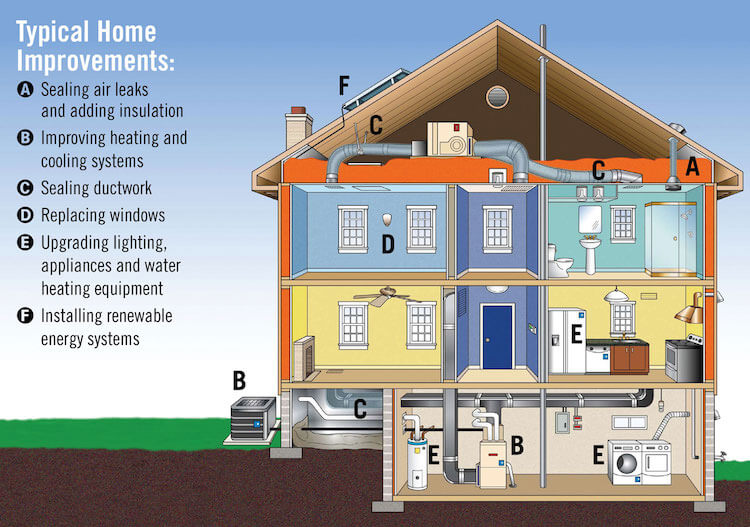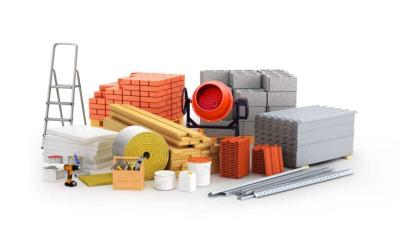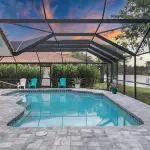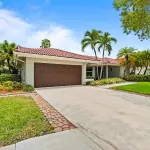
Energy-Efficient Materials That Are Changing Home Construction
Energy-Efficient Materials That Are Changing Home Construction
As the world becomes more conscious of the environmental impact of human activities, the construction industry is undergoing a transformation. One of the key drivers of this shift is the use of energy-efficient materials that not only enhance the performance of homes but also help reduce their environmental footprint. In 2024, energy-efficient building materials are playing an increasingly vital role in sustainable housing, helping homeowners reduce energy consumption, lower utility bills, and contribute to a greener planet. This article will explore the rise of energy-efficient materials in home construction and how they are reshaping the way we build homes.
1. The Need for Energy-Efficient Materials
The global push for sustainability has placed a spotlight on energy-efficient building materials as one of the most important innovations in modern construction. Traditional building materials often result in homes that are inefficient in terms of energy use, leading to higher heating and cooling costs, increased carbon emissions, and a heavier reliance on non-renewable energy sources.
With a growing emphasis on reducing carbon footprints and making homes more environmentally friendly, energy-efficient materials have emerged as a solution to combat these challenges. These materials are designed to improve insulation, reduce energy consumption, and lower the overall environmental impact of homes, making them more sustainable and cost-effective in the long run.
As the demand for green building practices rises, energy-efficient materials are being integrated into new home designs and renovations, offering homeowners the opportunity to create spaces that are both comfortable and eco-friendly.

2. Insulation Materials: The Backbone of Energy Efficiency
When it comes to energy efficiency, insulation is one of the most critical components. Effective insulation helps regulate the temperature inside a home by minimizing heat loss during the winter and keeping the interior cool during the summer. In 2024, a wide range of energy-efficient insulation materials are available, each offering different benefits.
Spray Foam Insulation: One of the most popular energy-efficient insulation materials is spray foam, which expands when applied to fill gaps and cracks in walls, ceilings, and attics. It creates an airtight seal that prevents air leaks, significantly improving the energy efficiency of a home. Spray foam also has a high R-value, meaning it provides excellent thermal resistance.
Cellulose Insulation: Made from recycled paper products, cellulose insulation is an eco-friendly option that offers great thermal performance. It is often blown into attics and wall cavities, providing a snug fit that helps reduce energy loss. Since it is made from recycled materials, cellulose is also a sustainable choice.
Rigid Foam Insulation: Rigid foam boards are commonly used in areas where space is limited, such as foundation walls or crawl spaces. These materials provide high insulation value and are particularly effective at preventing heat loss in areas that are more vulnerable to temperature fluctuations.
By using advanced insulation materials, homes can maintain a comfortable indoor temperature year-round while using less energy for heating and cooling, leading to lower utility bills and a reduced environmental impact.

3. Energy-Efficient Windows and Doors
Windows and doors are often the weakest points in terms of energy efficiency in a home. Poorly insulated or single-glazed windows allow heat to escape in the winter and let warm air in during the summer, forcing heating and cooling systems to work harder. In 2024, energy-efficient windows and doors are becoming a standard feature in many homes, offering better insulation, improved comfort, and lower energy costs.
Double and Triple Glazed Windows: One of the most effective ways to improve the energy efficiency of windows is by using double or triple glazing. These windows feature multiple panes of glass separated by a layer of air or gas, which acts as an insulating barrier. This helps reduce heat transfer, making homes warmer in the winter and cooler in the summer.
Low-E Glass: Low-emissivity (Low-E) glass is a type of glass that has a special coating designed to reflect heat and UV rays. This coating helps keep heat inside the home during colder months and prevents excessive heat from entering during the summer, improving the overall energy efficiency of the home.
Energy-Efficient Doors: Like windows, doors can also be a source of energy loss if not properly insulated. Energy-efficient doors are designed with materials such as fiberglass or steel that offer better insulation than traditional wood doors. These doors often come with weatherstripping to prevent drafts, ensuring that the home stays comfortable while reducing energy consumption.
4. Solar Panels and Solar Roofing
One of the most transformative energy-efficient materials in home construction is solar energy technology. In recent years, solar panels have become more affordable, efficient, and widely adopted, making them a viable option for homeowners looking to reduce their energy dependence and lower their carbon footprint.
Solar Panels: Solar panels are installed on the roof of a home to capture sunlight and convert it into electricity. In 2024, solar panels are more efficient than ever, with advancements in technology allowing for better energy capture and storage. Solar panels can help homeowners reduce their reliance on traditional energy sources, potentially saving money on energy bills while reducing their environmental impact.
Solar Roofing: Another innovative development in energy-efficient materials is solar roofing. These are specially designed roofing materials that integrate solar cells directly into the roof, eliminating the need for traditional panels. Solar roofing is particularly useful for homeowners who want a seamless, aesthetically pleasing way to incorporate solar energy into their homes without compromising the look of their property.
By harnessing the power of the sun, solar panels and solar roofing can significantly reduce a home's energy costs and provide a renewable source of energy.

5. Sustainable Flooring Options
Flooring materials also play a role in a home’s energy efficiency. Sustainable flooring options are gaining popularity, offering homeowners the opportunity to choose eco-friendly materials that have a lower environmental impact. Some of the most popular energy-efficient flooring materials include:
Bamboo Flooring: Bamboo is a highly renewable material that grows quickly, making it an eco-friendly option for flooring. It is durable, easy to maintain, and provides good insulation, helping to regulate indoor temperatures.
Cork Flooring: Cork is another sustainable flooring material that provides excellent thermal insulation. It is made from the bark of cork oak trees, which regenerate after harvesting, making it a renewable resource. Cork flooring is also naturally soundproof, adding to the comfort of a home.
Recycled Materials: Many manufacturers are now producing flooring made from recycled materials, such as reclaimed wood, recycled rubber, or plastic. These materials help reduce waste and minimize the environmental impact of flooring production.
Sustainable flooring options not only enhance the aesthetic appeal of a home but also contribute to its overall energy efficiency.
6. The Future of Energy-Efficient Materials
As we move further into 2024 and beyond, the use of energy-efficient materials in home construction is expected to continue growing. With advancements in technology, these materials will become more affordable, more widely available, and even more effective in improving energy efficiency.
Governments and organizations around the world are encouraging the adoption of green building practices through incentives and policies aimed at reducing energy consumption and promoting sustainability. As consumer demand for eco-friendly homes increases, the construction industry will continue to innovate, finding new ways to integrate energy-efficient materials into home design.

Conclusion
Energy-efficient materials are transforming the way we build and live in homes, offering sustainable, cost-effective solutions to reduce energy consumption and lower environmental impact. From advanced insulation materials to solar-powered roofs, these innovations are helping homeowners create more comfortable, eco-friendly living spaces. As the world continues to prioritize sustainability, the demand for energy-efficient building materials will only grow, paving the way for a greener future in home construction.










